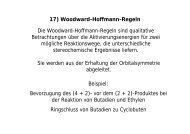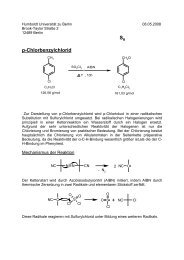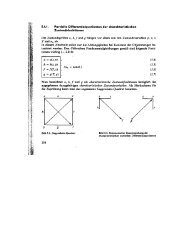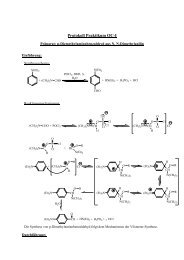Gas-Phase Reactions of Homo- and ... - Institut für Chemie
Gas-Phase Reactions of Homo- and ... - Institut für Chemie
Gas-Phase Reactions of Homo- and ... - Institut für Chemie
Create successful ePaper yourself
Turn your PDF publications into a flip-book with our unique Google optimized e-Paper software.
Helvetica Chimica Acta ± Vol. 88 (2005) 1419<br />
the disintegration <strong>of</strong> the NiM ‡ (Mˆ Fe, Co) clusters, the charged Ni ‡ -atom sticks to the<br />
nitrile, while atomic Fe <strong>and</strong> Co are eliminated in their neutral states (Eqns. 19, 22, 57,<br />
59, 62, <strong>and</strong> 64). We note in passing that an interdependence <strong>of</strong> the bond energy<br />
D 0(M ‡ M') between two different metal atoms in cluster cations <strong>and</strong> their reactivity<br />
has been reported previously. For example, FeV ‡ with a large dissociation energy <strong>of</strong><br />
D 0(V ‡ Fe) ˆ 314 21 kJ mol 1 [31] 3 ) reacts neither with alkanes nor with linear<br />
alkenes, but only with strained cyclic alkenes; CoFe ‡ , CuFe ‡ , <strong>and</strong> FeSc ‡ with<br />
dissociation energies <strong>of</strong> D 0(Co ‡ Fe) ˆ 276 29 kJ mol 1 [29], D 0(Cu ‡ Fe) ˆ<br />
222 29 kJ mol 1 [32] 4 ), <strong>and</strong> D 0(Fe ‡ Sc) ˆ 201 21 kJ mol 1 [33] also show no<br />
reactivity toward alkanes <strong>and</strong> only activate C H bonds <strong>of</strong> higher alkenes starting with<br />
butene; in contrast, FeMg ‡ with a dissociation energy <strong>of</strong> only D 0(Fe ‡ Mg) ˆ 142<br />
21 kJ mol 1 dehydrogenates even alkanes, starting from pentane [34].<br />
Conclusions. ± The reactions <strong>of</strong> the homo- <strong>and</strong> heteronuclear clusters MM' ‡ (M,<br />
M' ˆ Fe, Co, Ni) with some linear nitriles show, at least superficially, many similarities.<br />
However, the behavior <strong>of</strong> these dinuclear clusters is very distinct from that <strong>of</strong> the<br />
corresponding atomic cations Fe ‡ ,Co ‡ , <strong>and</strong> Ni ‡ . Whereas Fe ‡ ,Co ‡ , <strong>and</strong> Ni ‡ activate<br />
both C H <strong>and</strong> C C bonds <strong>of</strong> nitriles, <strong>and</strong>, in addition, follow some intriguing metalspecific<br />
mechanisms, the diatomic cluster cations only insert in C H bonds in the initial<br />
activation step. From the more reactive Ni-containing cluster cations FeNi ‡ , CoNi ‡ ,<br />
<strong>and</strong> Ni ‡ 2 ± in comparison to dinuclear Ni-free clusters ± the two latter ones activate<br />
C C bonds after initial C H bond activation. Further, for both the dinuclear as well as<br />
the atomic cations, the regioselectivity <strong>of</strong> C H bond activation mainly follows the<br />
concept <strong>of</strong> remote functionalization. Quite likely, this is a consequence <strong>of</strong> a linear endon<br />
arrangement <strong>of</strong> the atomic or dinuclear cluster cations to the nitriles investigated.<br />
However, subtle mechanistic variations which are supported by detailed modeling <strong>of</strong><br />
the isotope distributions seem to be operative, <strong>and</strong> electronic structure calculations [35]<br />
are suggested to uncover the origin <strong>of</strong> these effects.<br />
We are grateful to the Deutsche Forschungsgemeinschaft (DFG) <strong>and</strong> the Fonds der Chemischen Industrie<br />
for financial support.<br />
REFERENCES<br />
[1] K. Koszinowski, D. Schröder, H. Schwarz, J. Am. Chem. Soc. 2003, 125, 3676; K. Koszinowski, D. Schröder,<br />
H. Schwarz, Organometallics 2004, 23, 1132; K. Koszinowski, D. Schröder, H. Schwarz, Angew. Chem., Int.<br />
Ed. 2004, 43, 121; H. Schwarz, Leopoldina Jahrbuch 2004, 49, 397.<br />
[2] K. Eller, H. Schwarz, Chem. Rev. 1991, 91, 1121; D. Schröder, C. Heinemann, W. Koch, H. Schwarz, Pure<br />
Appl. Chem. 1997, 69, 273; V. E. Bondybey, M. K. Beyer, J. Phys. Chem. A 2001, 105, 951; D. K. Böhme, H.<br />
Schwarz, Angew. Chem., Int. Ed. 2005, 44, 2336 <strong>and</strong> refs. cit. therein.<br />
[3] P. Braunstein, J. RoseÂ, in Metal Clusters in Chemistry , Ed. P. Braunstein, L. A. Oro, P. R. Raithby, Wiley-<br />
VCH, Weinheim, 1999, Vol. 2, p. 616; R. D. Adams, B. Captain, J. Organomet. Chem. 2004, 689, 4521.<br />
[4] S. P. J. Albracht, J. Biochim. Biophys. Acta 1994, 1188, 167; M. Pavlov, P. E. M. Siegbahn, M. R. A.<br />
Blomberg, R. H. Crabtree, J. Am. Chem. Soc. 1998, 120, 548; S. I. Lippard, I. M. Berg, Principles <strong>of</strong><br />
Bioinorganic Chemistry , University Science Books, Mill Valley, California, 1994.<br />
3 ) D0(Fe ‡ V) ˆ 444 21 kJ mol 1 [31].<br />
4 ) D0(Fe ‡ Cu) ˆ 234 29 kJ mol 1 [32].



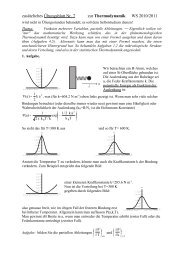
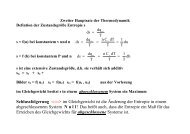
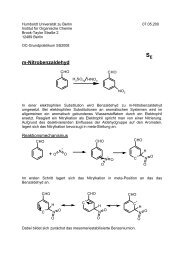
![Photoswitchable ionophores based on 1,3-alternate calix[4]arenes ...](https://img.yumpu.com/12290271/1/190x253/photoswitchable-ionophores-based-on-13-alternate-calix4arenes-.jpg?quality=85)
